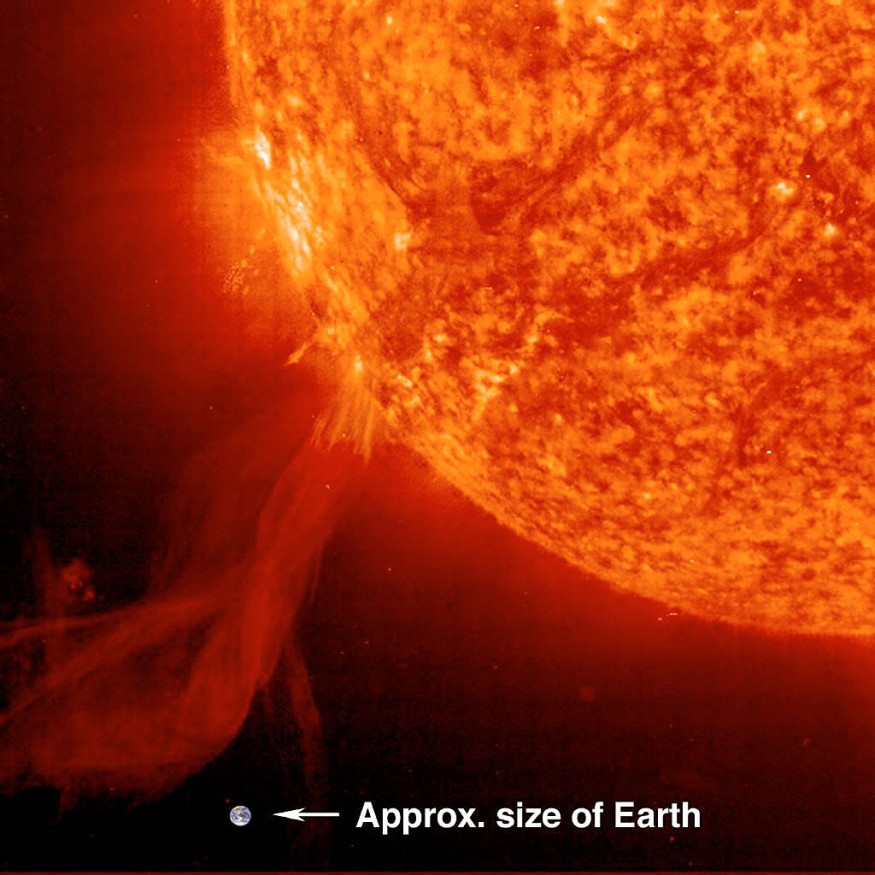The Sun has been quite active over the last two weeks. Our star has had a series of massive outbursts that have hurled plasma through space.

One of the most spectacular was a massive coronal mass ejection and solar flare that exploded from the Sun's far side just before midnight on February 15. Based on its scale, the explosion might have been in the most powerful category that our Sun can produce: an X-class flare, according to Science Alert.
Will It Hurt Us?
Humans won't directly experience any of the consequences of a geomagnetic storm, which comes when debris from the explosion crashes into Earth's atmosphere because the flare and CME were directed away from us.
Communication outages, electrical grid oscillations, and auroras are all examples. However, the increasing activity signals that such storms may be on the way soon.
Related Article : Expert Warns 'Situation Worse than Covid' if Government Ignores Solar Flare Defense
Active Zones
Astronomer Junwei Zhao of Stanford University's helioseismology division told SpaceWeather, "This is just the second farside active zone of this size since September 2017."
"If this area remains large when the Sun spins to the Earth-facing side, it might produce some spectacular flares."
The Sun has exploded every day in February, according to SpaceWeatherLive, which measures solar activity, with some days containing numerous flares. This includes three M-class flares on February 12th, 14th, and 15th: an M1.4 on February 12, an M1 on February 14, and an M1.3 on February 15. In January, there were also five M-class flares.
Our Sun got angry for a moment yesterday just before midnight UTC. A prominence eruption (maybe combined with a powerful flare?) launched a massive CME into space. While not earth-directed, the eruption was huge and could signal there might be something interesting on its way... pic.twitter.com/z0fhjNp5mO
— SpaceWeatherLive (@_SpaceWeather_) February 16, 2022
Geomagnetic Storms
Following an M-class flare on January 29, a light geomagnetic storm knocked 40 freshly launched Starlink satellites out of low-Earth orbit. Depending on how rapidly the material is flying, ejecta from a solar explosion can take a few days to reach Earth. So far, the milder C-class flares in February have been the most common.
HOW ABOUT THAT CME??!!! 😳😱😍 pic.twitter.com/HyulxmGUfW
— Karl Battams (@SungrazerComets) February 16, 2022
While this may appear frightening, it is relatively common for our Sun as it ramps up its activity in the run-up to and during solar maximum - the most dramatic period of its activity cycle.
Solar Activity
While the Sun appears to us on Earth to be rather steady daily, it really moves through 11-year activity cycles with a clearly defined minimum and maximum points. This cycle is based on the Sun's magnetic field, alternating between the north and south magnetic poles every 11 years.
The solar minimum, marked by a low level of sunspot and flare activity, occurs when the Sun's magnetic field is at its weakest and signals the end of one cycle and the start of a new one.
Sunspots are transitory zones of intense magnetic fields, whereas coronal mass ejections erupt from solar flares are caused by magnetic field lines snapping and rejoining.
The most recent solar minimum occurred in December last year.
When the solar magnetic field becomes twisted, sunspots appear. Because the solar equator rotates faster than the higher latitudes, this occurs. There are now 111 sunspots on the Sun, however not all of them are erupting.
Around July 2025, the Sun will reach its highest point. Because we don't know what drives them (a new study shows it has to do with an 11.07-year planetary alignment), it's tough to anticipate how active any cycle will be. However, scientists discovered evidence in 2020 that we may be approaching the strongest process ever recorded.
Keeping Eye
It's unclear if the remainder of the cycle will follow suit. Still, a crazy Solar Cycle is something we're looking forward to as long as it doesn't deliver another disastrous Carrington Event
Read also: [UPDATE] Solar Storms: Are They Dangerous?
For more cosmic news, don't forget to follow Nature World News!
© 2026 NatureWorldNews.com All rights reserved. Do not reproduce without permission.





